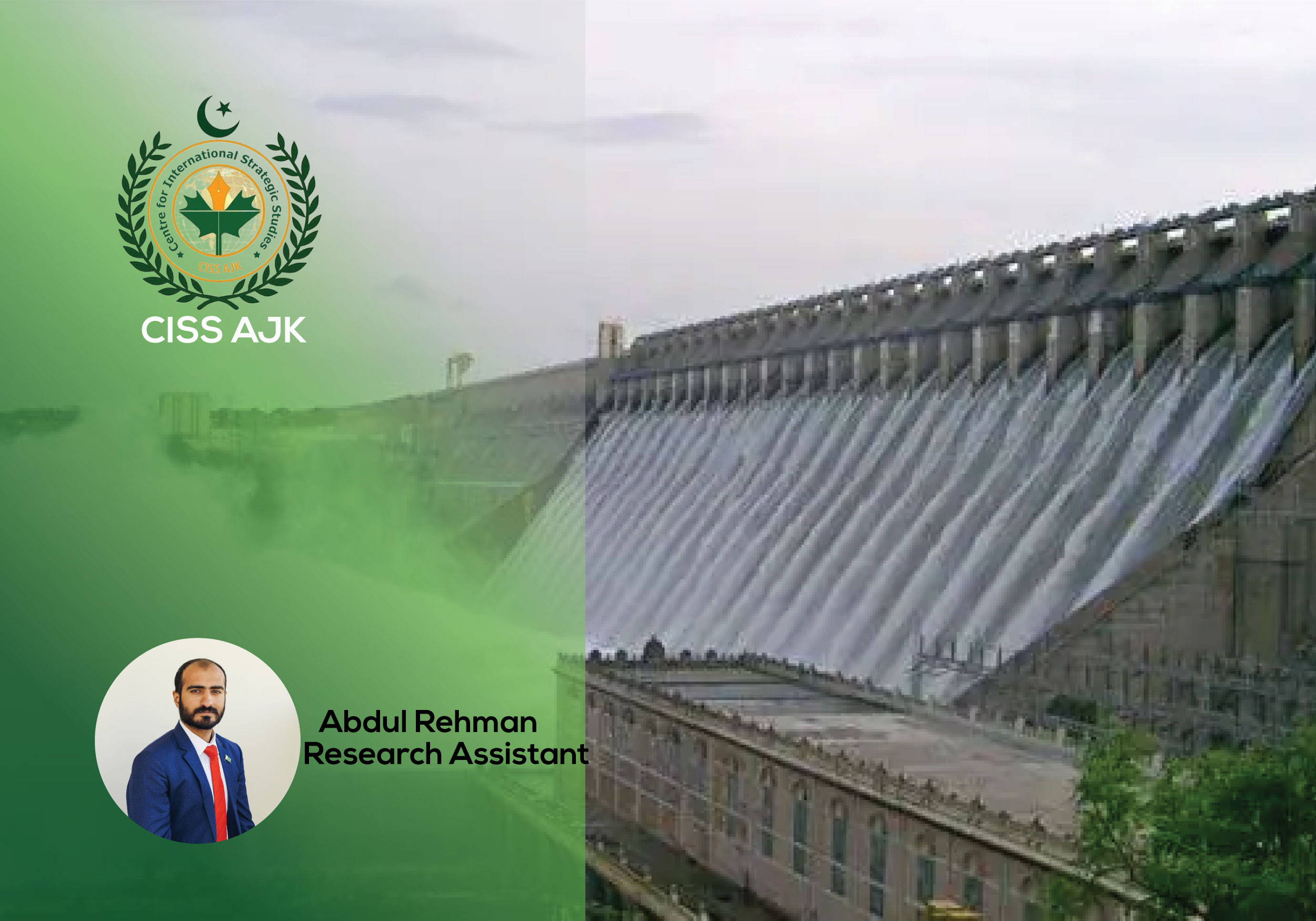From record drought in Europe this summer and destructive floods in Pakistan, water has beentop-of-mind for many this year. Water crises can shake societies, destroy livelihoods, and threaten prosperity for decades. They can also be the spark that sets aflame a powder keg of social and political issues, resulting in violent conflict. For Pakistan, water has become an existential issue. Pakistan is one of the world’s driest countries, with an average rainfall of under 240 mm a year. The country’s water resources consist mainly of rainfall, rivers, glaciers, and groundwater.
The population and economy are heavily dependent on an annual influx into the Indus River system (including the Indus, Jhelum, Chenab, Ravi, Beas, and Sutlej rivers) of about 180 billion cubic meters of water flowing mainly through India and heavily depends on glacier melt in the western Himalayas. Various national and international reports on Pakistan’s water situation indicate that the country is fast moving from water-stressed to water-scarce. Pakistan Strategic Country Environmental Assessment Report, 2006, says water availability per person has drastically fallen from about 5,000 cubic meters in 1947 to 1,100 cubic meters. It projects that water availability will hit below 700 cm per capita by 2025.
Depleting freshwater resources, changing climatic patterns, and increasing consumption is further exacerbated by Indian ambitious hydro projects, which are against the spirit of the Indus Water Treaty. In such a drastic scenario,the worst situation for Pakistan is Indian ability to stop water in the lean period and release it in the monsoons.The Indus Water Treaty was signed as a permanent solution to the water-sharing problem between the two countries when water was in abundance in the Indus system.
Given the climate changes underway, water insecurity in the basin has heightened, resulting in the politicization of the water issue between the two countries. The growing water stress has coincided with India’s ambitious plan to construct 27 large hydropower projects, especially on the Chenab and Jhelum rivers. The fact that India has not been forthcoming in sharing information and engineering details regarding these projects as required in the Treaty has aroused Pakistan’s apprehension. The projects are not merely run-of-the-river structures as allowed under the treaty, but their number and structures allow India to acquire manipulative control that could be used to hamper water flows into Pakistan.Indus water treaty withstood even though Pakistan and India have faced many ups and downs in the bilateral relations even fought three wars and severalborder skirmishes. But one thing should be kept in mind during those periods of upheavals, water was in abundance.
The climatic pressures have changed the scenario in the 21st century. Water influx has been dropping and the need for water for both states have been increasing. So, the question arises will the IndusWater Treaty withstand such pressures in the future? Ifnot, then how water can be the root cause of future conflicts between India and Pakistan? Water is considered a strategic resource and if a strategic resource is shared between two unfriendly states, the such resource can be a potential flash point.Peter H. Gleick, at the Pacific Institute for Studies in Development, Environment, and Security, emphasizes the empirical evidence that shows the conflict potential of the watersharing issues between the riparians in the basins even where they have entered into formal cooperative agreements. Gleick maintains a conflict chronology database detailing 203 incidents stretching way back to 3000 BC. He identifies six categories of conflict, some of them are overlapping. These conflicts are; Control of Water Resources: (state and non-state actors): where water supplies or access to water is at the root of tensions. Second Military Tool (state actors): where water resources or water systems themselves are used by a nation or state, as a weapon during a military action. Third, Political Tool (state and non-state actors): where water resources, or water systems themselves, are used by a nation, state, or non-state actor for a political goal. Fourth Terrorism (non-state actors): where water resources, or water systems, are either targets or tools of violence or coercion by non-state actors. Fifth Military Target: (state actors): where water resource systems are direct targets of military actions by nations or states. And sixthe one is Development Disputes: (state and non-state actors): where water resources or water systems are a major source of contention and dispute in the context of economic and social development. Control over water resources; use of water as a political tool, its relationship with socioeconomic development, a military target, andthe threat of terrorists/nonstate actors using it both as a target or a tool is quite relevant to the India-Pakistan context.
Further, experts on transboundary water resources identify two key variables that define the likelihood and intensity of water conflict in a given river basin. The first is the amount and rate of physical or institutional change in the water system covered. The second is the strength of the cooperative institutions linking the riparians.Global warming will place unprecedented pressure on both and becomes very relevant when it comes to hydro politics in the Indus basin. Indus Water treaty is currently facing unprecedented climatic pressures which are intensified by Indian hydro projects. It can likely trigger a “water war” which will further inflame socio-political fault lines in South Asia. So, to avert the inevitable, IWT should be duly revisited and substantially strengthened.



